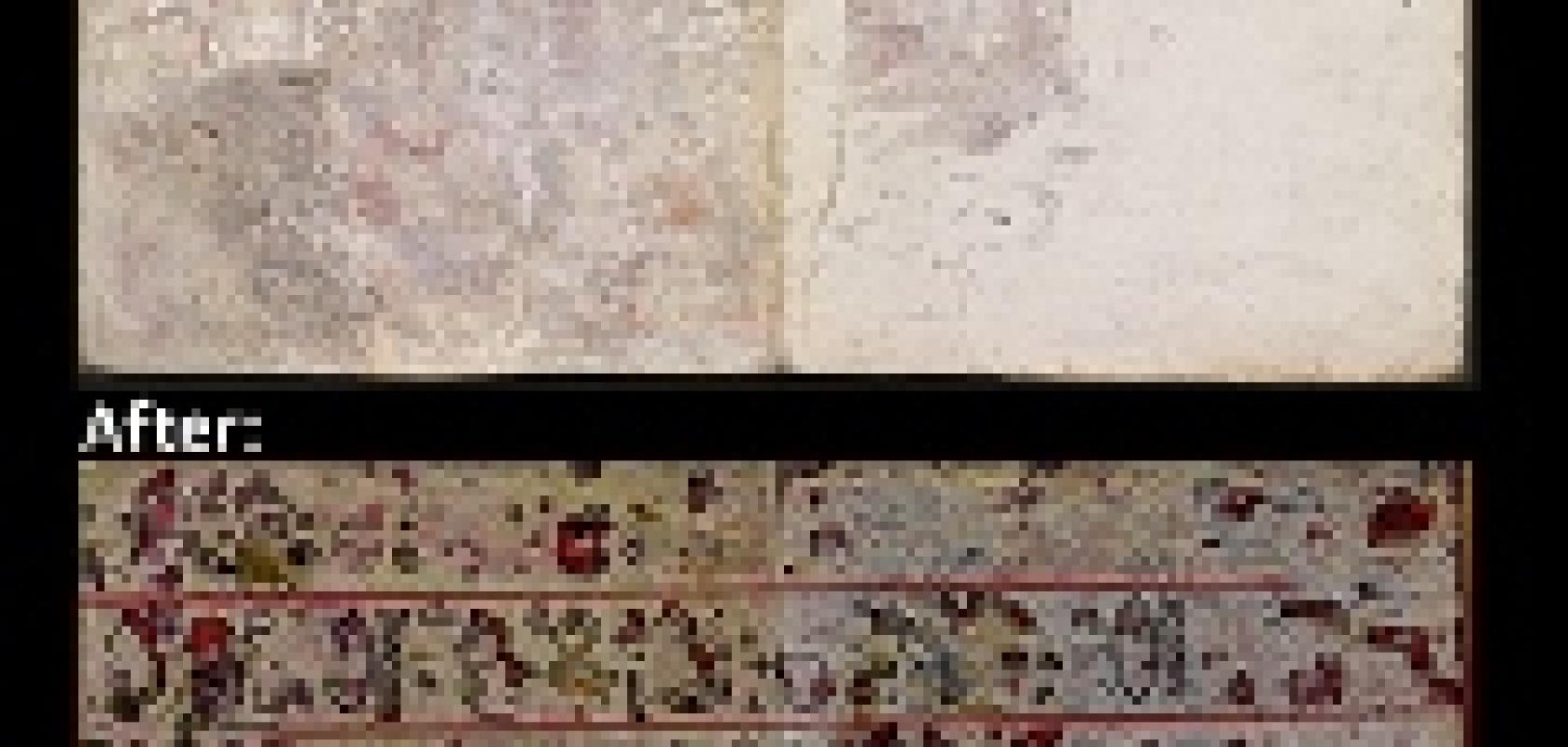A rare Mexican book that was hidden from view for almost 500 years has been revealed using hyperspectral imaging.
The manuscript, or codex, was concealed beneath a layer of plaster and chalk on the back of a later manuscript known as the Codex Selden, housed at the Bodleian Libraries at the University of Oxford.
Through hyperspectral imaging, Bodleian researchers, in collaboration with universities in the Netherlands, were able to view pictographic scenes from the document and have published their findings in the Journal of Archaeological Science: Reports.
Ancient Mexican codices are some of the most important artefacts of early Mexican culture and they are particularly rare. Codex Selden, also known as Codex Añute, dates from around 1560 and is one of fewer than 20 known Mexican codices to have survived from pre-colonial and early colonial Mexico. These codices use a complex system of pictures, symbols and bright colours to narrate centuries of conquering dynasties and genealogies as well as wars and the history of ancient cities.
Since the 1950s, scholars have suspected that Codex Selden is a palimpsest, an older document that has been covered up and reused to make the manuscript that is currently visible. The manuscript underwent a series of invasive tests in the 1950s when one page on the back was scraped, uncovering a vague image that hinted at the possibility that an earlier Mexican codex lay hidden beneath.
Until now, no other technique has been able to unveil the concealed narrative in a non-invasive way. The organic paints that were partly used to create the vibrant images on early Mexican codices do not absorb x-rays, which rules out x-ray analysis that is commonly used to study later works of art.
‘After four or five years of trying different techniques, we’ve been able to reveal an abundance of images without damaging this extremely vulnerable item. We can confirm that Codex Selden is indeed a palimpsest,’ said Ludo Snijders from Leiden University, who conducted the research with David Howell from the Bodleian Libraries and Tim Zaman from the University of Delft.
‘Hyperspectral imaging has shown great promise in helping us to begin to reconstruct the story of the hidden codex and ultimately to recover new information about Mixtec history and archaeology,’ added David Howell, head of heritage science at the Bodleian Libraries. ‘This is very much a new technique, and we’ve learned valuable lessons about how to use hyperspectral imaging in the future both for this very fragile manuscript and for countless others like it.’
The Libraries acquired the hyperspectral scanner in 2014 in order to reveal hidden text and images and identify unknown substances and pigments with a high degree of accuracy. Researchers have recently used the scanner to clarify the text of the famous Bakhshali manuscript from India, which includes the first use of zero, to analyse the medieval Gough Map, the earliest road map of Great Britain and to reveal a hidden devil in a centuries-old Armenian gospel-book.
This is the first time an early Mexican codex has been proven to be a palimpsest.
‘What’s interesting is that the text we’ve found doesn’t match that of other early Mixtec manuscripts. The genealogy we see appears to be unique, which means it may prove invaluable for the interpretation of archaeological remains from southern Mexico,’ Snjiders said.
Some pages feature more than 20 characters sitting or standing in the same direction. Similar scenes have been found on other Mixtec manuscripts, representing a King and his council. But the analysis of this particular text shows that the characters are both male and female, raising interesting questions about what the scene represents.
Further information


